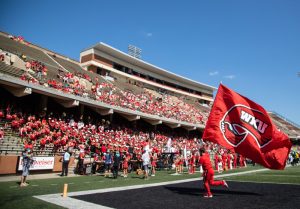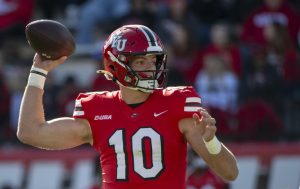WKU releases communication, branding manual for consistency
August 30, 2011
When a new student comes to WKU, he or she faces many choices ranging from which classes or major to choose, or whether or not to join a club or a sport.
But before any of that, the first decision they make is going to WKU.
“That has got to be first and foremost in our consistency,” said President Gary Ransdell. “The recognizable brand is most important.”
WKU is working to strengthen the university brand by focusing on a new Communications and Branding Manual and the updated WKU website.
At the President’s Convocation to faculty and staff Aug. 22, Ransdell announced the publication of the 47-page manual, which outlines the standards for using WKU logos and other graphic content.
The manual includes guidelines on how to use the WKU name, logos, colors and other branding tools. For example, the use of “Western” is deemed unacceptable, replaced solely by “WKU” and “Western Kentucky University.”
Sixteen pages of the manual are labeled “Logo Usage” and lay out the restrictions on the WKU logo in regards to size, color, proportions and font. One page includes rules on how to use the Big Red logo, stating that Big Red is neither male nor female and cannot talk.
Robbin Taylor, vice president for Public Affairs, said the manual took about 12 to 18 months to put together. Although many of the standards were already in place, it helped to gather them all together in one document.
“We had a lot of people ask us for guidelines,” Taylor said. “As we come out with a very standardized website, I think the need for a little bit more guideline and standardization was good timing.”
The branding manual’s publication coincides with a big step for the website redesign.
After 18 months of transformation, the WKU website is finally entering the final stage of its launch said Bob Owen, vice-president for Information Technology.
But that doesn’t mean the work is done.
“The website will be dynamic,” Owen said. “It will constantly be evolving and staying current. It needs to be a living entity.”
Taylor said all the college and departmental websites were launched over the summer, leaving just the administrative pages, which should be up by the end of September.
Owen said the website transition has gone very smoothly.
“Not all website transitions go this well, and I attribute that to a stellar group of individuals who put forth a really great effort to get the website up,” he said.
The website was redesigned and rebuilt entirely in-house, Taylor said, with hundreds of people across campus meeting monthly to work on it.
The key to the new website’s success, Owen said, is the content management system that allows changes or updates to be made quickly.
Taylor said before this project, it had been almost seven years since the WKU website had been substantially changed, adding that going so long between changes was “probably not smart.”
Owen said staying fresh in these areas of communication is essential to strengthening and upholding the university identity.
“We know that students are shopping for their educational experience online,” he said. “We have to make sure we’re spiffed up and looking good.”












